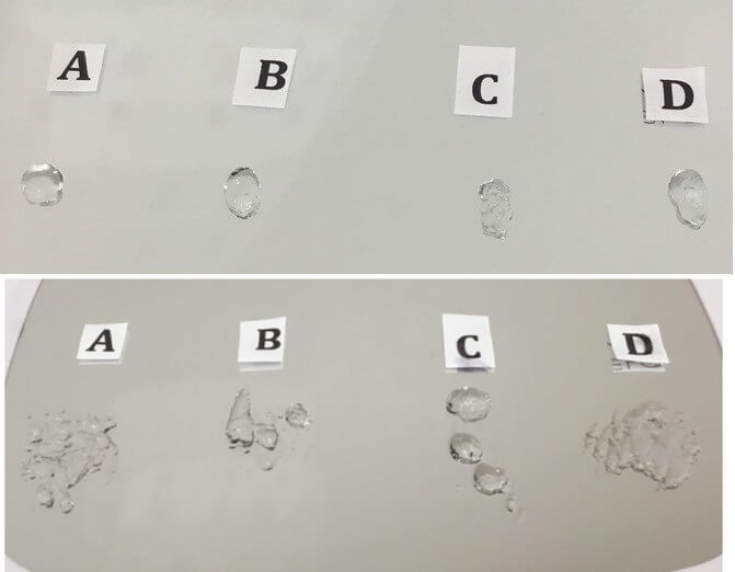Cosmetologist Sharon Bennett on the rheological properties of HA fillers to consider when injecting hyaluronidase:
«Hyaluronidase– a substance well known to cosmetologists, which is used off-label to dissolve dermal fillers based on hyaluronic acid.
Injections of this enzyme are used both to correct the aesthetic result and to resolve serious complications after the administration of HA.
This article estet-portal.com presents the results of an experiment conducted by a cosmetologist Sharon Bennett to demonstrate the response of different hyaluronic acid gels to hyaluronidase.
- Hyaluronidase dissolution of HA: expert group recommendations
- Interaction of hyaluronic acid fillers with hyaluronidase: author's experiment
- What factors are important to consider when working with hyaluronidazoth
Hyaluronidase dissolution of HA: recommendations of the expert group
The dose of hyaluronidase required to dissolve hyaluronic acid, according to guidelines developed by the Complications Management Expert Group (ACE), depends on several factors and filler characteristics, such as:
- mono or biphasic gel;
- degree of cross-linking of HA;
- BG concentration.
However, the manual does not explain exactly how the various properties of the filler affect its degradation.
The expert panel recommends not focusing on a specific dosage, but injecting the amount of hyaluronidase necessary to obtain the desired effect.
Typically, practitioners report that much more hyaluronidase is needed to achieve the desired result than indicated in the guideline (Table 1).
|
Region |
Hyaluronidase (Unit) |
|
Nose and around the mouth |
15–30 |
|
Around the eyes |
3–4.5 |
|
Under the eyes |
10–15 |
|
Lower eyelid |
1.5 |
Table 1: Recommendations of the ACE group on the amount of hyaluronidase to dissolve fillers in various anatomical areas of the face.
- filler with the highest HA content is the most resistant to degradation;
- monophasic and biphasic gels are equally sensitive to the enzyme;
- the higher the degree of HA cross-linking, the more resistant the filler is to degradation
- and.
The author notes that this experiment is not an official study and certain restrictions apply to its results, because:
- doctor did not analyze differences in filler properties and their potential impact on interaction with hyaluronidase;
- exposure time was limited to 5 minutes;
- The experiment was performed once.
Hyaluronic acid removal features: important information for specialists
Different particle sizes, cohesiveness, and HA cross-linking methods may result in different filler responses to hyaluronidase.
Experiment Progress:
- Each of the 4 fillers in the amount of 0.2 ml was applied to the mirror surface
- (Fig. 1). 1500 units
- hyaluronidase (Hylase) were diluted with 5 ml saline; thus, in 1 ml of solution = 300 units. enzyme, and 0.1 ml of solution = 30 units. enzyme. 30 units were injected into every 0.2 ml of filler. hyaluronidase.
- After 5 minutes, the results
- (Fig. 1 and Table 2). were received

Fig. 1: Four HA fillers (0.2 ml each) before and 5 minutes after injection of 30 units of hyaluronidase.
Filler designation |
Author rating |
A |
Rapid satisfactory degradation
|
B |
Formation of clumps or large particles; more hyaluronidase is required for complete dissolution
|
C |
Formation of three separate clumps or large particles; more hyaluronidase is required for complete dissolution
|
D |
Rapid satisfactory degradation
|
Table 2: Filler response to hyaluronidaseu.
What factors are important to consider when working with hyaluronidaseThe results of the experiment confirm that different HA-based products react differently to hyaluronidase.
And this, in turn, affects the amount of time required to resolve a particular complication, which is especially important in emergency situations.
Fillers that break down into large particles or clumps require more hyaluronidase or repeated enzyme injections to degrade.
Repeated injections are known to:
- increased risk of inflammation, bruising and tissue injury;
- high doses of hyaluronidase are associated with risks of allergic reactions.
Hyaluronidase enzyme in cosmetology: elimination of side effects of fillers
However,in emergency situations high doses of the enzyme are essential.
Thus, according to the ACE Guidelines for Impulse High Dose Hyaluronidase (HDPH), it is recommended to administer450-1500 units in case of tissue ischemia. hyaluronidase every hour until the complication resolves.
It is important to understand that the dose of hyaluronidase required to resolve the complication may be significantly higher than recommended and vary depending on the injected filler.The author believes that extensive studies on the interaction of HA fillers with hyaluronidase should be conducted, which will provide practitioners with information on the amount of enzyme and the time required to dissolve various drugs.







Add a comment